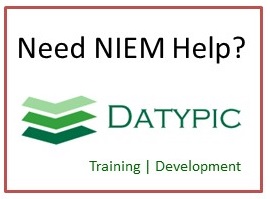gml:AbstractCoverageType
The base type for coverages is gml:AbstractCoverageType. The basic elements of a coverage can be seen in this content model: the coverage contains gml:domainSet and gml:rangeSet properties. The gml:domainSet property describes the domain of the coverage and the gml:rangeSet property describes the range of the coverage.
Complex type information
Namespace: http://www.opengis.net/gml/3.2
Schema document: external/ogc/gml/3.2.1/coverage.xsd
Properties: Abstract
Content
- Sequence [1..1]
- gml:metaDataProperty [0..*]
- gml:description [0..1]The value of this property is a text description of the object. gml:description uses gml:StringOrRefType as its content model, so it may contain a simple text string content, or carry a reference to an external description. The use of gml:description to reference an external description has been deprecated and replaced by the gml:descriptionReference property.
- gml:descriptionReference [0..1]The value of this property is a remote text description of the object. The xlink:href attribute of the gml:descriptionReference property references the external description.
- gml:identifier [0..1]Often, a special identifier is assigned to an object by the maintaining authority with the intention that it is used in references to the object For such cases, the codeSpace shall be provided. That identifier is usually unique either globally or within an application domain. gml:identifier is a pre-defined property for such identifiers.
- gml:name [0..*]The gml:name property provides a label or identifier for the object, commonly a descriptive name. An object may have several names, typically assigned by different authorities. gml:name uses the gml:CodeType content model. The authority for a name is indicated by the value of its (optional) codeSpace attribute. The name may or may not be unique, as determined by the rules of the organization responsible for the codeSpace. In common usage there will be one name per authority, so a processing application may select the name from its preferred codeSpace.
- gml:boundedBy [0..1]This property describes the minimum bounding box or rectangle that encloses the entire feature.
- Choice [0..1]from subst. group gml:location
- Choice [1..1]
- gml:domainSetThe gml:domainSet property element describes the spatio-temporal region of interest, within which the coverage is defined. Its content model is given by gml:DomainSetType. The value of the domain is thus a choice between a gml:AbstractGeometry and a gml:AbstractTimeObject. In the instance these abstract elements will normally be substituted by a geometry complex or temporal complex, to represent spatial coverages and time-series, respectively. The presence of the gml:AssociationAttributeGroup means that domainSet follows the usual GML property model and may use the xlink:href attribute to point to the domain, as an alternative to describing the domain inline. Ownership semantics may be provided using the gml:OwnershipAttributeGroup.
- gml:multiPointDomain
- gml:multiCurveDomain
- gml:multiSurfaceDomain
- gml:multiSolidDomain
- gml:gridDomain
- gml:rectifiedGridDomain
from subst. group gml:domainSet - gml:rangeSet [1..1]The gml:rangeSet property element contains the values of the coverage (sometimes called the attribute values). Its content model is given by gml:RangeSetType. This content model supports a structural description of the range. The semantic information describing the range set is embedded using a uniform method, as part of the explicit values, or as a template value accompanying the representation using gml:DataBlock and gml:File. The values from each component (or "band") in the range may be encoded within a gml:ValueArray element or a concrete member of the gml:AbstractScalarValueList substitution group . Use of these elements satisfies the value-type homogeneity requirement.
from type gml:AbstractGMLTypefrom group gml:StandardObjectPropertiesfrom type gml:AbstractFeatureType
Attributes
| Name | Occ | Type | Description | Notes |
|---|---|---|---|---|
| gml:id | [1..1] | xsd:ID | The attribute gml:id supports provision of a handle for the XML element representing a GML Object. Its use is mandatory for all GML objects. It is of XML type ID, so is constrained to be unique in the XML document within which it occurs. | from type gml:AbstractGMLType |
Used by
- Element gml:AbstractCoverage
- Element gml:AbstractContinuousCoverage via derived type gml:AbstractContinuousCoverageType
- Element gml:AbstractDiscreteCoverage via derived type gml:DiscreteCoverageType
- Element gml:GridCoverage via derived type gml:DiscreteCoverageType
- Element gml:MultiCurveCoverage via derived type gml:DiscreteCoverageType
- Element gml:MultiPointCoverage via derived type gml:DiscreteCoverageType
- Element gml:MultiSolidCoverage via derived type gml:DiscreteCoverageType
- Element gml:MultiSurfaceCoverage via derived type gml:DiscreteCoverageType
- Element gml:RectifiedGridCoverage via derived type gml:DiscreteCoverageType
Type inheritance chain
- gml:AbstractGMLType
- gml:AbstractFeatureType
- gml:AbstractCoverageType
- extended by gml:DiscreteCoverageType
- extended by gml:AbstractContinuousCoverageType
- gml:AbstractCoverageType
- gml:AbstractFeatureType



